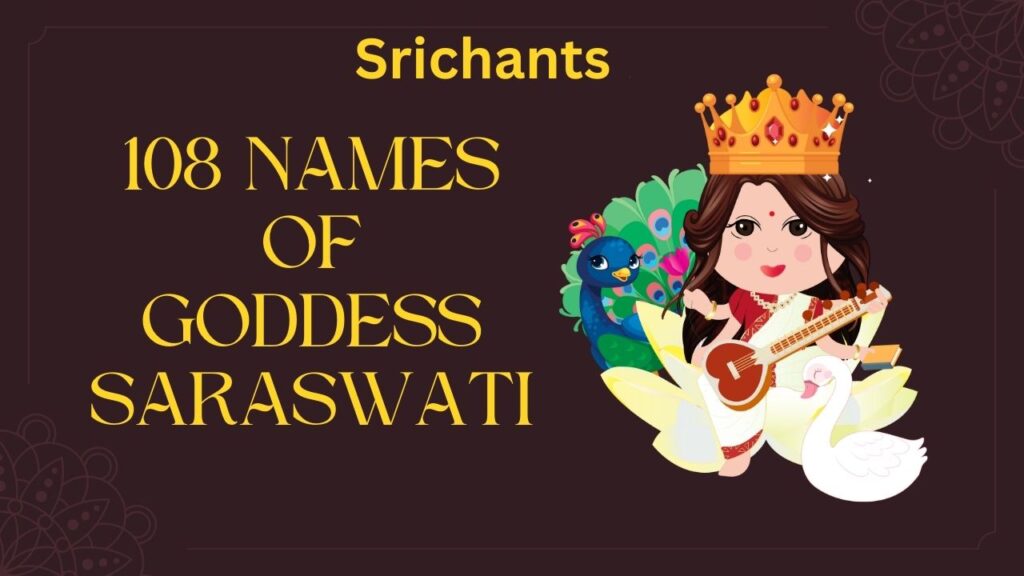Saraswati and Brahma: Marriage and Curse
Introduction
Hinduism offers a rich tapestry of fascinating mythological stories, complex rites, and great wisdom. Among this enormous storehouse of old knowledge, one narrative jumps out: the fascinating account of the strong Hindu goddess Saraswati and her dramatic battle with the maker deity, Lord Brahma. This mysterious myth shows the deeper relevance of these supernatural leaders in the cosmic order as well as the complicated link among them.
The arrival of Goddess Saraswati
Hindu texts hold that Lord Brahma discovered the world he had created still lacked form and organization once he finished the act of creation. Brahma called the embodiment of knowledge and wisdom, the goddess Saraswati, to correct this. Rising from Brahma’s own mouth, Saraswati became the divine messenger allowing the creator to permeate the universe with enlightenment, harmony, and order.

Brahma’s Attachment and Saraswati’s Flight
Goddess Saraswati’s stunning beauty and keen intelligence immediately enthralled her father, Lord Brahma. Driven by an incestuous need, Brahma resolved himself to be Saraswati his consort. Horrified by her father’s passionate intentions, Saraswati sought to hide from his sight by dressing as many different animals. But the constant Brahma, in his search for his daughter’s sexual beauty, produced extra faces to follow her movements, leading to a fifth head capable of skyward reach.
Saraswati’s Curse
Furious with Brahma’s open show of untamed affection, Goddess Saraswati cast a strong curse upon him. Unlike the respected Lord Vishnu and Lord Shiva, Brahma said, Brahma would never be generally adored or venerated on Earth. The goddess denounced Brahma for distorting the soul in the cage of flesh and blood and for bringing desire and sadness throughout the planet.
The Rising of Gayatri
Desperate to carry out a pivotal ritual ceremony, the unhappy Brahma looked for a fix. A fresh consort called Gayatri was formed by divine grace to help him with the ceremony. She was quite irritated and insulted Brahma once again, nevertheless, when the enraged Saraswati arrived and saw that he had taken another wife in her absence.
The Results of Saraswati’s Fury
The curse of Saraswati affected the devotion to Lord Brahma greatly. Her heavenly mandate results in only two notable temples honoring Brahma across the whole Indian subcontinent: one at Kumbhakonam, Tamil Nadu, and another at Pushkar, Rajasthan. This sharp contrast to the abundance of temples celebrating Vishnu and Shiva attests to the ongoing force of Saraswati’s retribution.
The Review of Soma Rasa
In still another fable, Goddess Saraswati’s inventiveness and cunning are on full show. Saraswati volunteered to get the priceless liquid when the demigod Gandharvas stole the elixir of life, sometimes called as Soma Rasa, from the gods. Saraswati recovered the taken Soma Rasa by decorating her divine Veena (lute) and mesmerizing the Gandharvas with her enchanted music, therefore restoring the balance of power in the celestial sphere.

Iconography and symbolism of Saraswati
Usually showing as a beautiful, fair-complexioned goddess, Saraswati is exquisitely attired in pure white. Often sitting on a white lotus, she represents the purity and knowledge flow. A book (the Vedas), a crystal mala (signifying meditation and spirituality), a pitcher of water (symbolizing creativity and purification), and a Veena—the instrument of divine music and the arts—adorn Saraswati’s four hands.
The Importance of Saraswati’s Vahana
Saraswati’s steed, or vahana, is the Hamsa, a swan endowed with extraordinary sensitivity for separating milk from water. This stands for the goddess’s ability to judge between the real and the unreal and to separate truth from lie. Positioned on Saraswati’s right side, the peacock represents the harmony between reason and feeling.
Saraswati’s Involvement Across Cultures
Respect of Goddess Saraswati goes much beyond the Indian subcontinent. She is revered as Biàncáitin and Benzaiten in China and Japan respectively; in Myanmar she is Thurathadi. The ending day of the Pawukon calendar in Indonesia honors Saraswati, the goddess of learning. This great respect emphasizes the general appeal and importance of Saraswati’s heavenly qualities.
Saraswati: The Eternal Wisdom
Hindu traditions hold that the riches of knowledge brought forth by Goddess Saraswati are everlasting. Unlike worldly goods, which lose value with sharing, the more knowledge one shares with others the more one is blessed. At the core of Saraswati’s legacy is this deep awareness of the transforming power of wisdom.

honoring the Goddess of Knowledge
Every year on the fifth day of the lunar month of Magha, Goddess Saraswati—also known as Vasanta Panchami—is born. Vibrant celebrations in temples, homes, and schools all throughout the Indian subcontinent mark this lucky event as devotees honor the divine incarnation of learning, arts, and music.
Conclusion
A monument to the richness and complexity of Hindu mythology, the gripping story of Goddess Saraswati and her conflict with Lord Brahma is This narrative not only clarifies the complex interactions among the celestial figures but also emphasizes the great importance of Saraswati’s function as the goddess of knowledge, arts, and wisdom. Saraswati’s legacy inspires and guides devotees, academics, and seekers of truth in their path of enlightenment by her strong curse and relentless dedication to maintaining the cosmic order.
#saraswati #brahma #brahmasaraswati #marriage #curse #relationship







